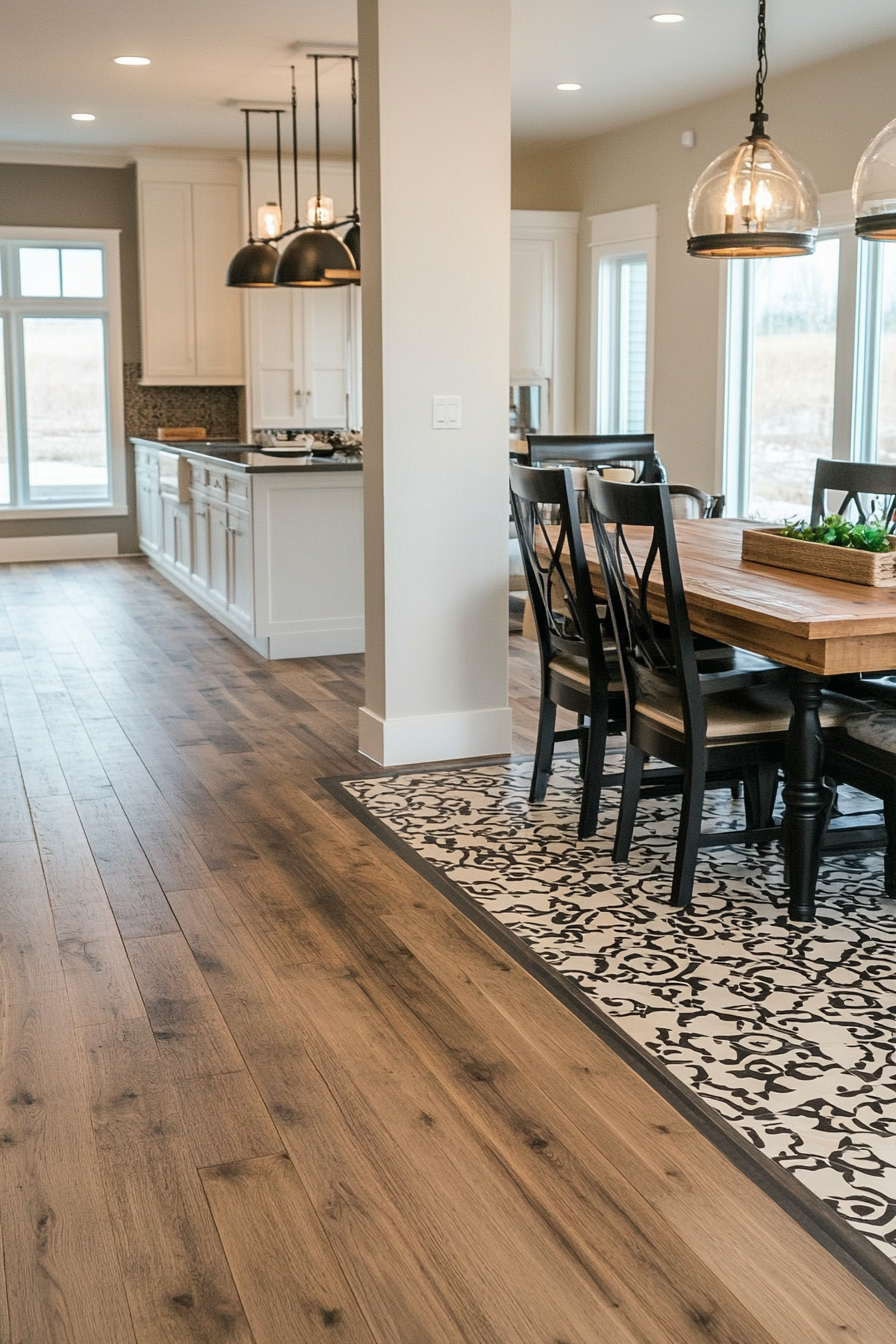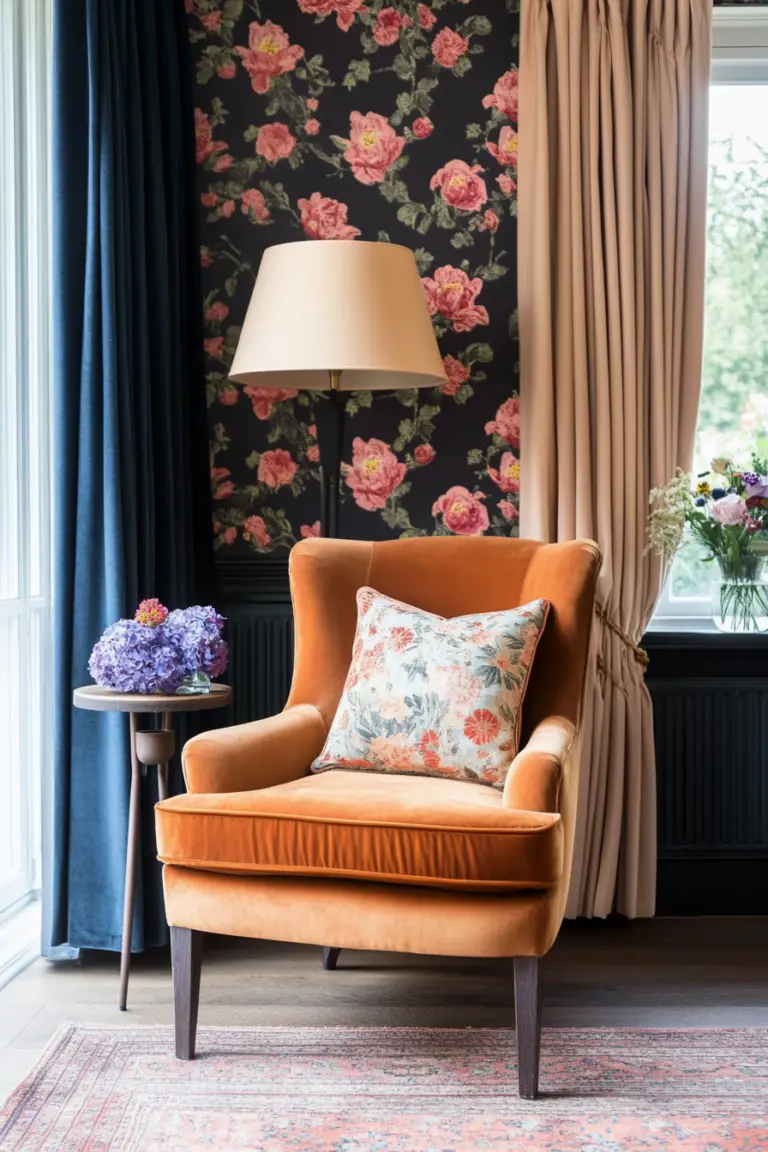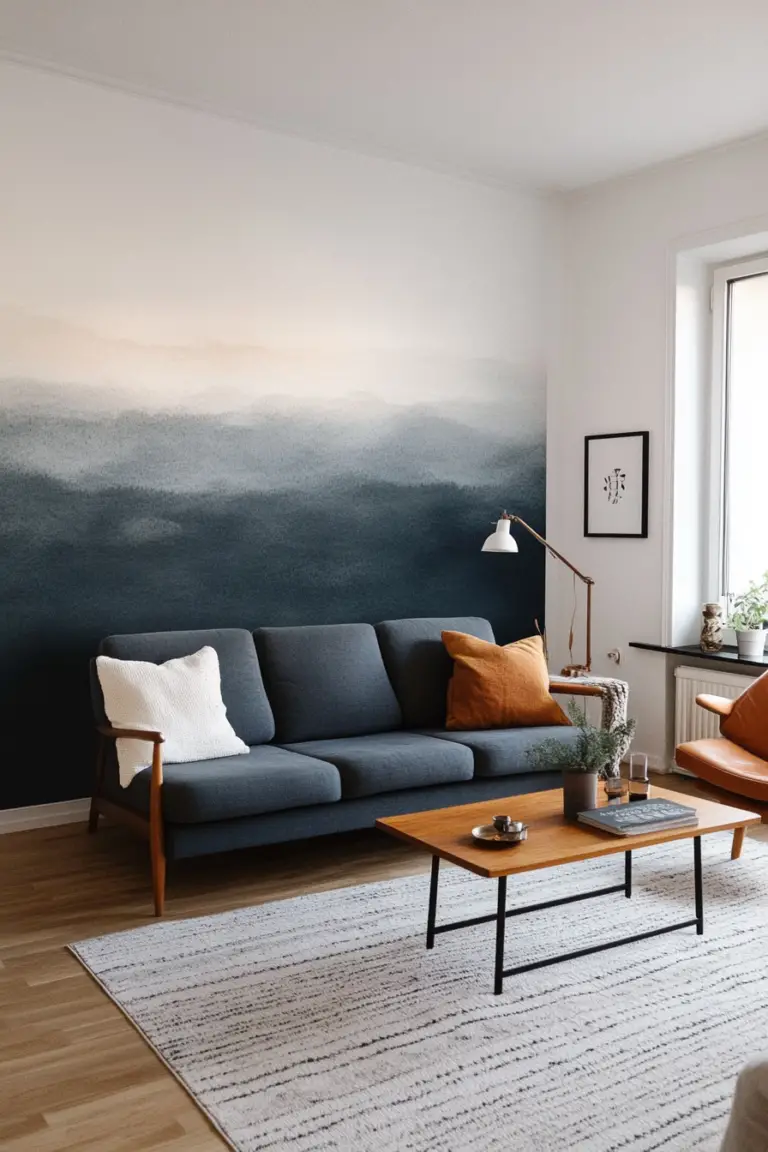Have you noticed how natural and sustainable flooring options are popping up everywhere? From home renovation blogs to glossy interior design magazines, it’s clear that this trend is here to stay. But what’s behind this growing shift toward eco-friendly choices?
The Drive Toward Sustainability
For many homeowners, it’s not just about aesthetics anymore—it’s about values. People are becoming increasingly aware of the impact their homes have on the environment. Here’s why eco-friendly flooring is making waves:
- Healthier living spaces: Natural materials like cork and rustic hardwood don’t just look great; they also contribute to healthier indoor air quality by avoiding harmful chemicals.
- Sustainability matters: Options like recycled vinyl and reclaimed wood allow you to reduce waste without sacrificing style.
Plus, these materials bring a warm, organic feel that makes a house feel more like a home. It’s all about creating a space that reflects both your taste and your conscience.
Multifunctional Spaces Call for Versatile Flooring
Our homes are no longer just where we sleep and relax. They’ve evolved into workspaces, entertainment hubs, and even fitness studios. With so much happening under one roof, flooring trends are stepping up to meet the challenge.
What is “Bold Zoning”?
One of the hottest trends right now is bold zoning—using different flooring materials or patterns to define specific areas within an open-plan layout. This clever design trick lets you separate spaces without building walls. Imagine this:
- A cozy living area with rich wood tones transitions into a sleek home office with durable vinyl tiles.
- A playroom’s vibrant, easy-to-clean flooring flows effortlessly into a stylish dining space with timeless hardwood.
This approach not only makes your home more functional but also visually dynamic.
The Comeback of Classic Patterns: Herringbone and Chevron
It seems everything old is new again, and flooring patterns are no exception. Herringbone and chevron designs are staging a major comeback, adding a touch of timeless elegance to modern interiors.
Why Are They So Popular?
There’s something undeniably sophisticated about these classic patterns. They turn your floor into a statement piece, instantly elevating any room. Here’s why homeowners can’t get enough:
- Timeless appeal: These designs have stood the test of time, and for good reason—they’re beautiful, versatile, and never go out of style.
- Accessibility: Thanks to modern manufacturing, you can now achieve these intricate patterns using budget-friendly materials like luxury vinyl tiles (LVT) and engineered wood.
Whether it’s a herringbone hallway or a chevron-accented kitchen, these patterns are proof that sometimes, tradition and innovation go hand in hand.
1. Mosaic tiles with geometric patterns
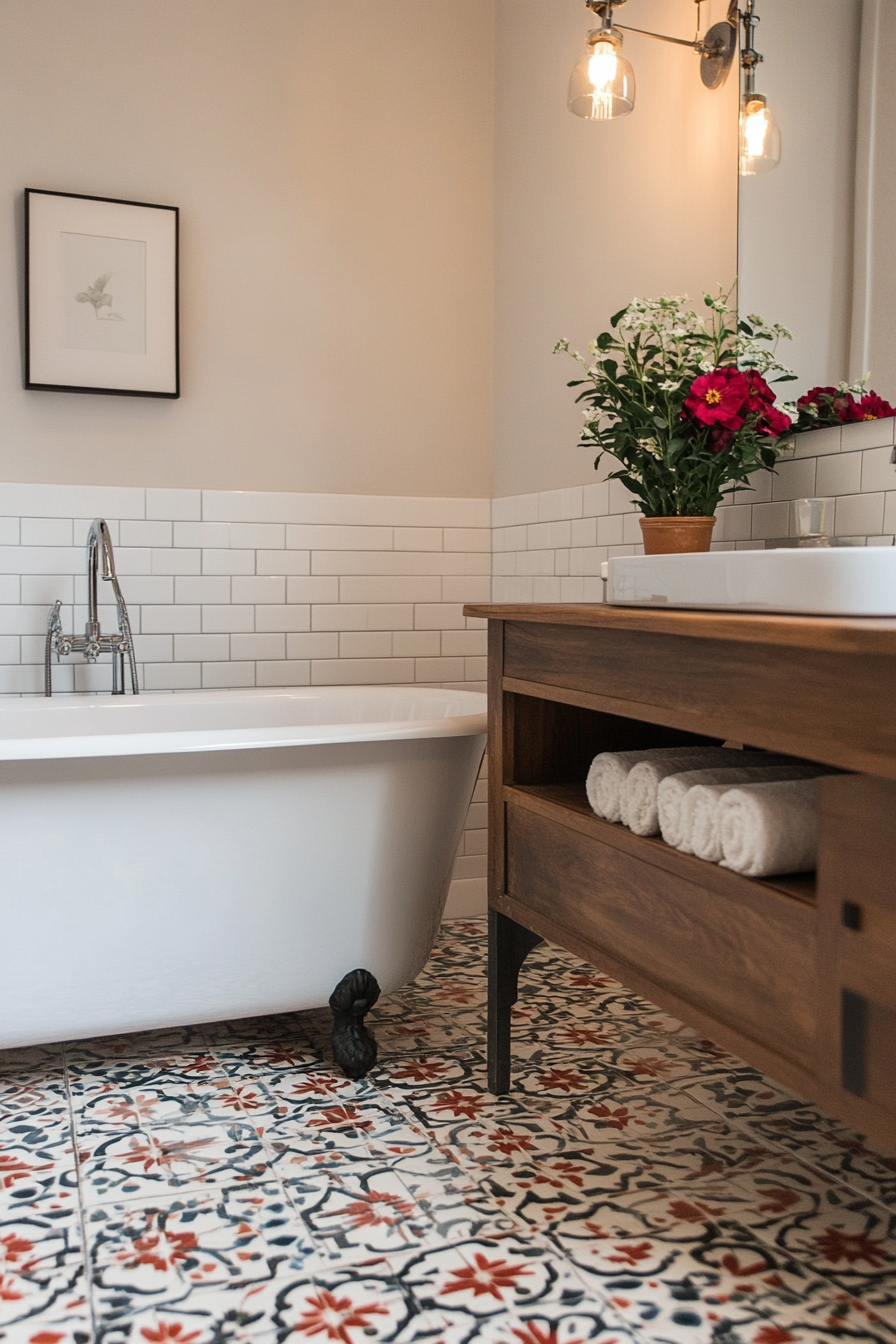
Mosaic tiles with geometric patterns are a stylish way to introduce visual interest and sophistication into your flooring. Whether you prefer intricate hexagons, bold chevrons, or symmetrical diamonds, these tiles can instantly transform a space. They work especially well in bathrooms, kitchens, or entryways where you want to make a statement. To implement this trend, choose a color palette that complements your décor, and let the pattern take center stage.
Quick tip: Use contrasting grout colors to highlight the geometric design.
Geometric mosaic tiles are available in a variety of materials, including ceramic, porcelain, and glass, each offering unique benefits. Porcelain is durable and easy to clean, while glass provides a luminous, upscale finish. Consult a professional for complex layouts to ensure the pattern aligns perfectly.
Why you should try it: This trend combines artistry and functionality, adding a bespoke touch to your home.
For an on-trend look, pair mosaic tiles with minimalist furniture or decor to balance the bold flooring. It’s a creative way to make your space stand out while staying timeless.
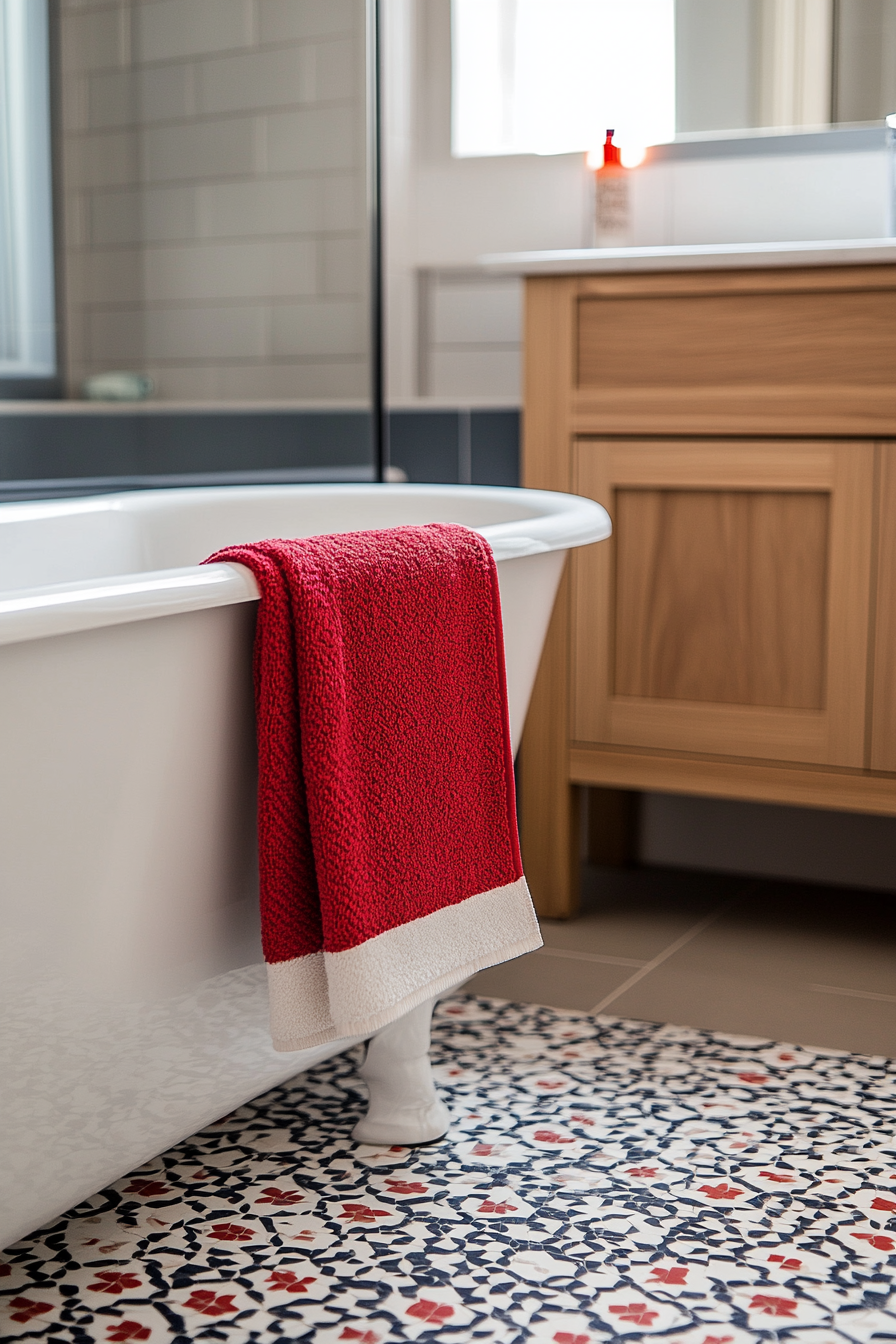
2. Art Deco-inspired parquet flooring
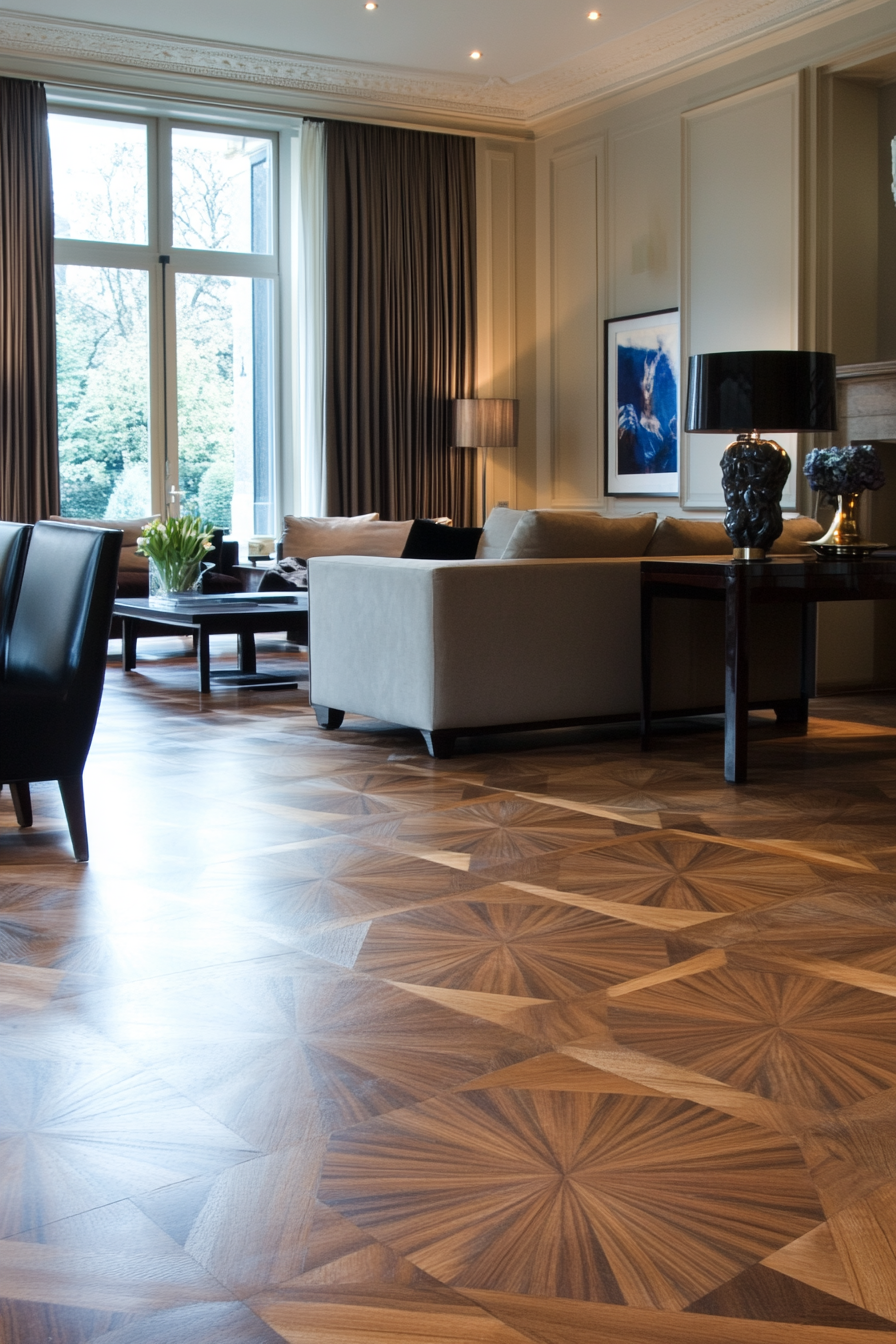
Art Deco-inspired parquet flooring brings the glamour and elegance of the 1920s into modern homes. Characterized by intricate patterns like chevrons, sunbursts, or fan motifs, this style adds a touch of luxury to living rooms, dining areas, or bedrooms. Choose warm, rich tones like walnut or mahogany for a classic vibe, or opt for lighter woods for a contemporary twist.
Quick tip: Use matte finishes to keep the design sophisticated, not overly flashy.
Modern manufacturing techniques make it easier than ever to install parquet flooring, even as pre-finished planks. Ensure your subfloor is even before installation to achieve the best results. Regular maintenance, such as gentle cleaning and occasional refinishing, will keep your parquet looking pristine for years.
Why you should try it: Parquet flooring is a timeless design feature that can elevate any room with its unique patterns and luxurious appeal.
To maximize the impact of this flooring, keep surrounding decor simple. Let the intricate design of the parquet take the spotlight in your space.

3. Quiet luxury marble floors

Quiet luxury marble floors are the epitome of elegance and refinement. This trend emphasizes understated opulence, with soft, neutral tones like creamy whites, subtle greys, or warm beige. Perfect for entryways, bathrooms, or open-concept living areas, marble floors create a seamless, high-end look. Pair them with soft textures and minimalist furniture to let their natural veining shine.
Quick tip: Opt for honed finishes for a more subtle, matte appearance.
Marble floors require regular care to maintain their pristine appearance. Use a pH-neutral cleaner and avoid acidic substances that can damage the surface. Consider radiant heating underneath for added comfort in colder months, as marble can feel cool to the touch.
Why you should try it: This timeless material brings a sense of calm and luxury to any room.
To elevate your space, complement marble floors with elegant lighting and natural materials like wood or linen for a balanced aesthetic.

4. Rustic hardwood with darker stains

Rustic hardwood with darker stains is a flooring trend that brings warmth and character to your home. These floors feature rich, deep hues like espresso or chocolate brown, showcasing the natural grain and imperfections of the wood. Ideal for cozy living rooms or dining spaces, they pair beautifully with farmhouse or industrial-style decor.
Quick tip: Choose engineered hardwood for easier installation and maintenance.
Darker stains tend to show dust and scratches more easily, so regular cleaning is key. Use soft pads under furniture to avoid dents, and consider rugs for high-traffic areas to protect the finish.
Why you should try it: This flooring adds warmth, depth, and a sense of authenticity to any space.
Layer your rustic hardwood flooring with textured rugs and throw pillows to create a warm, inviting atmosphere that’s both stylish and functional.
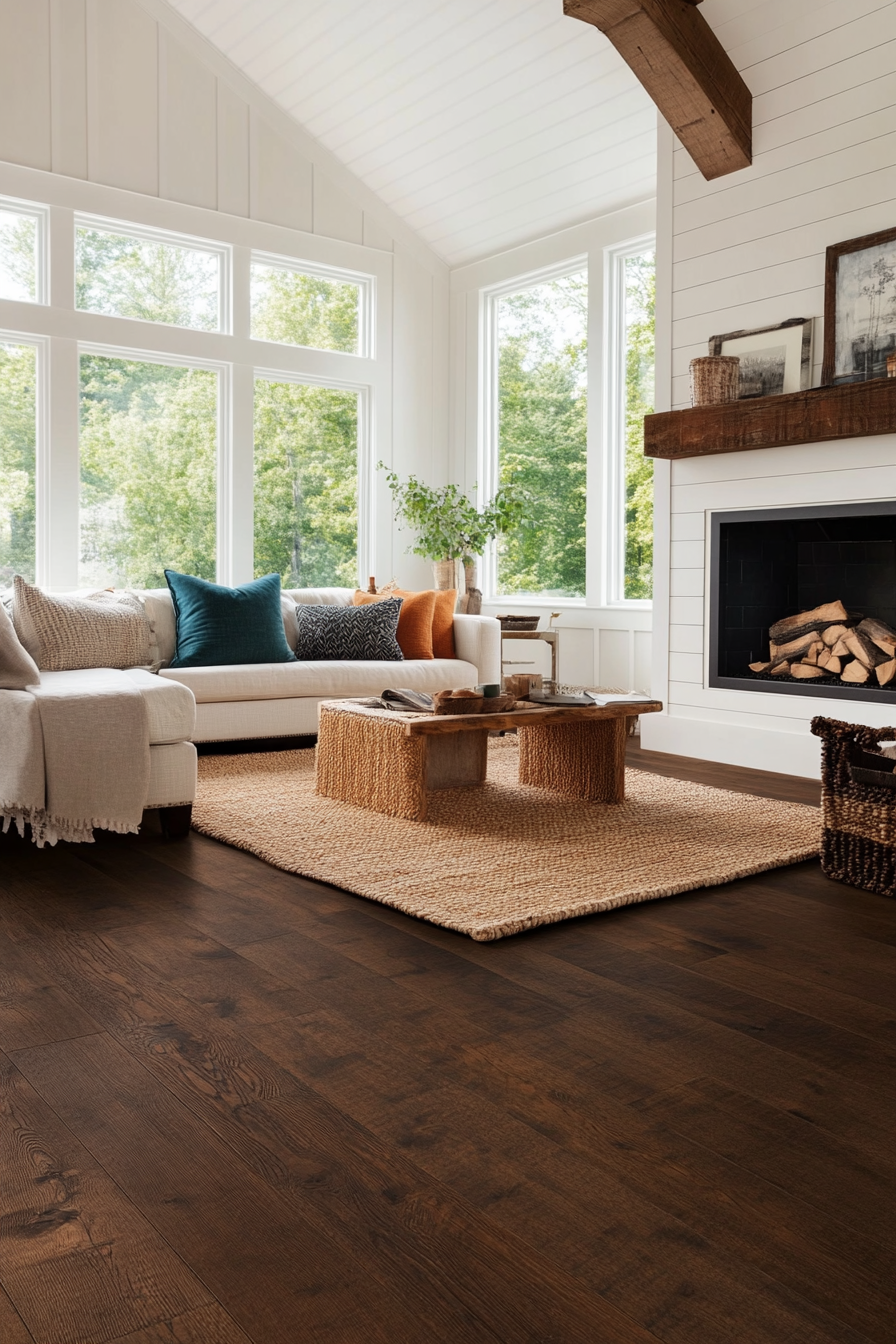
5. Black and white revival designs
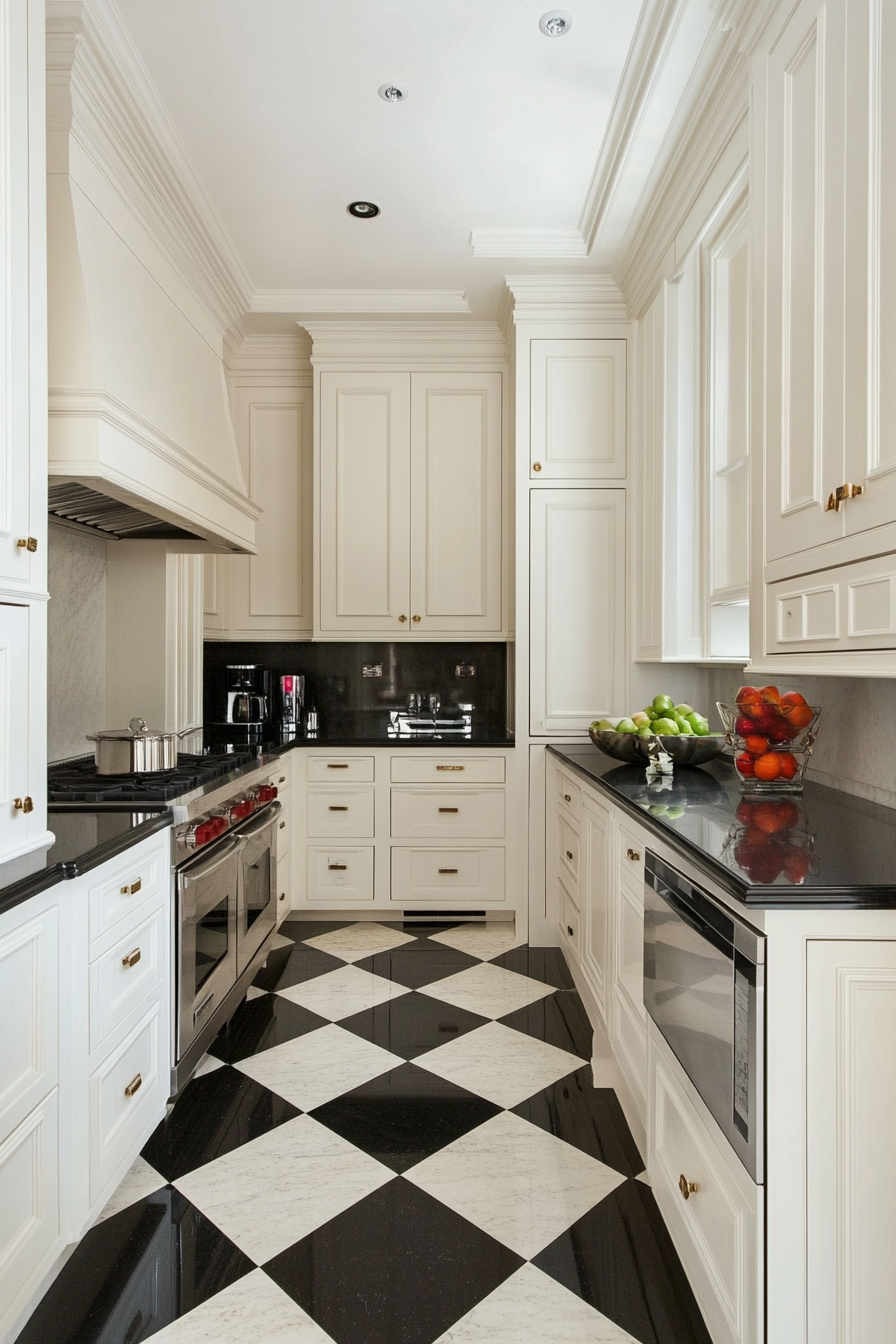
Black and white revival designs are a bold nod to vintage aesthetics with a modern twist. Whether you choose a classic checkerboard pattern or more intricate motifs, this trend makes a dramatic statement in kitchens, bathrooms, or entryways. The timeless contrast of black and white creates visual intrigue and a sense of order in any space.
Quick tip: Consider large tiles for a modern take or smaller tiles for a vintage feel.
For a seamless look, use contrasting grout colors to emphasize the design. These floors work well with minimalist or monochrome décor, letting the pattern take center stage. Additionally, consider non-slip finishes for areas prone to moisture.
Why you should try it: It’s a classic look that can elevate any room while being playful and versatile.
Pair black and white flooring with pops of color in furniture or accessories to create a chic and balanced design that feels fresh and modern.
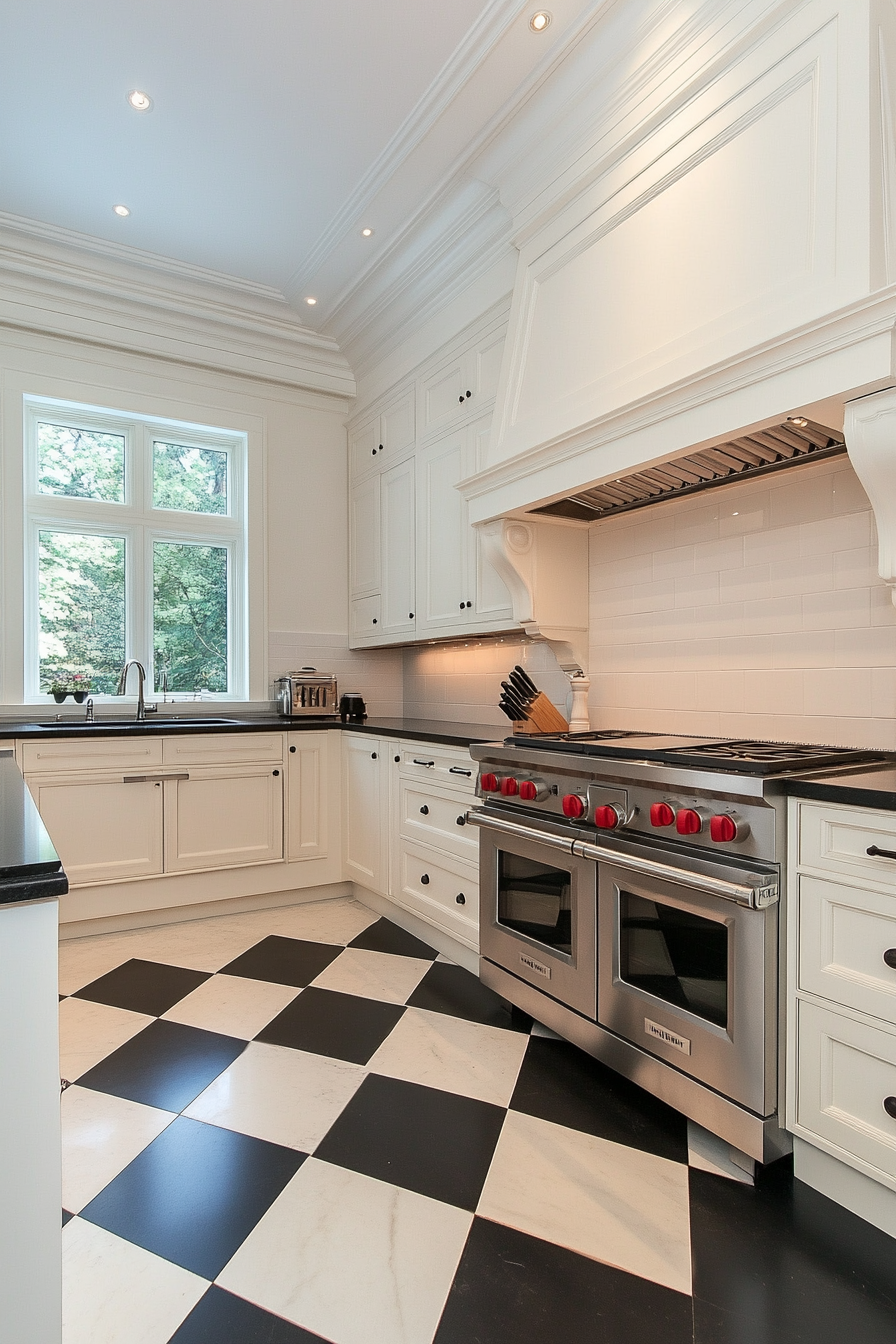
6. Natural textures and colors

Natural textures and colors are taking center stage in flooring trends, emphasizing organic beauty and sustainability. Think warm oak, soft pine, or stone-inspired finishes that create a serene, grounded ambiance. These floors work well in open spaces, bedrooms, or even home offices, providing a subtle backdrop that complements a wide range of decor styles.
Quick tip: Choose wide planks for a more contemporary look that enhances the natural texture.
Materials like engineered wood or laminate offer the aesthetic of natural materials with added durability and affordability. Be sure to select finishes with low-VOC emissions for a healthier indoor environment. Regular cleaning and protective pads can extend the lifespan of these floors.
Why you should try it: Natural tones are timeless, versatile, and create a calming connection to the outdoors.
Layering textures like woven rugs or chunky knit throws enhances the natural look, making your space feel cozy and inviting.
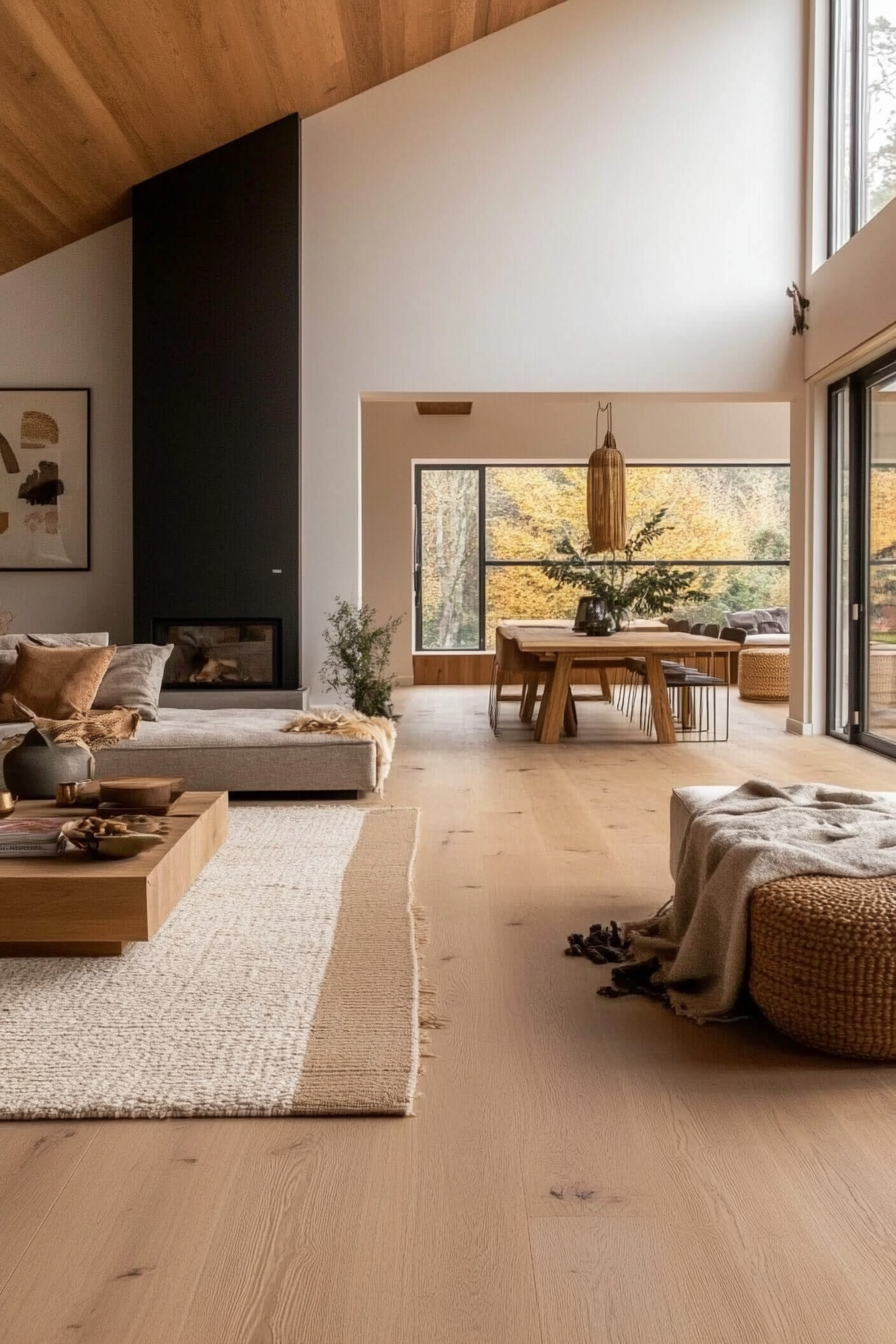
7. Herringbone and chevron patterns

Herringbone and chevron patterns are classic designs that are experiencing a modern revival. These patterns add a sense of movement and sophistication to any space, making them ideal for living rooms, hallways, or bedrooms. Light-colored woods work beautifully in these layouts, offering a fresh and airy feel.
Quick tip: Consider contrasting stains or materials for a more dynamic pattern.
While the installation of herringbone or chevron patterns can be more complex, the results are worth the effort. Pre-assembled planks and professional installers can make the process smoother. Regular maintenance, like sweeping and gentle mopping, will help maintain the intricate design.
Why you should try it: This design offers timeless elegance while allowing you to personalize the look.
For a striking visual effect, use herringbone or chevron flooring in large open spaces where the pattern can truly shine.

8. Mixed materials and textures

Mixed materials and textures are a bold way to add depth and personality to your floors. This trend involves combining elements like wood and tile or concrete and stone to create distinct zones or artistic patterns. It’s perfect for open-plan layouts or transitional spaces like kitchens that flow into dining areas.
Quick tip: Keep the palette cohesive to ensure a seamless blend of materials.
This trend requires careful planning to ensure a smooth transition between materials. Use trims or borders to define the edges cleanly. Choose materials with similar thicknesses for an even surface, and work with a professional to ensure precision during installation.
Why you should try it: Mixed-material floors are visually striking and allow for creative expression.
To maximize this trend, use the mixed textures to highlight functional areas, such as tiles near the sink and wood in dining zones, for both aesthetic and practical benefits.

9. Light-colored wood flooring

Light-colored wood flooring is a versatile and modern trend that brightens up any space. Soft tones like ash, birch, or whitewashed oak reflect natural light, making rooms feel more spacious and airy. These floors are ideal for Scandinavian-inspired interiors, coastal styles, or contemporary homes seeking a fresh and clean look.
Quick tip: Pair light wood with bold accent furniture for a stunning contrast.
Light wood flooring is available in a variety of options, from solid hardwood to engineered planks and laminates. It’s also more forgiving when it comes to showing dirt or scratches, making it a practical choice for busy households. Regular sweeping and occasional refinishing will keep these floors looking pristine.
Why you should try it: Light wood flooring is timeless, easy to style, and instantly uplifts a room’s ambiance.
For an effortlessly chic aesthetic, pair these floors with natural fabrics, greenery, and plenty of sunlight for a refreshing, welcoming vibe.
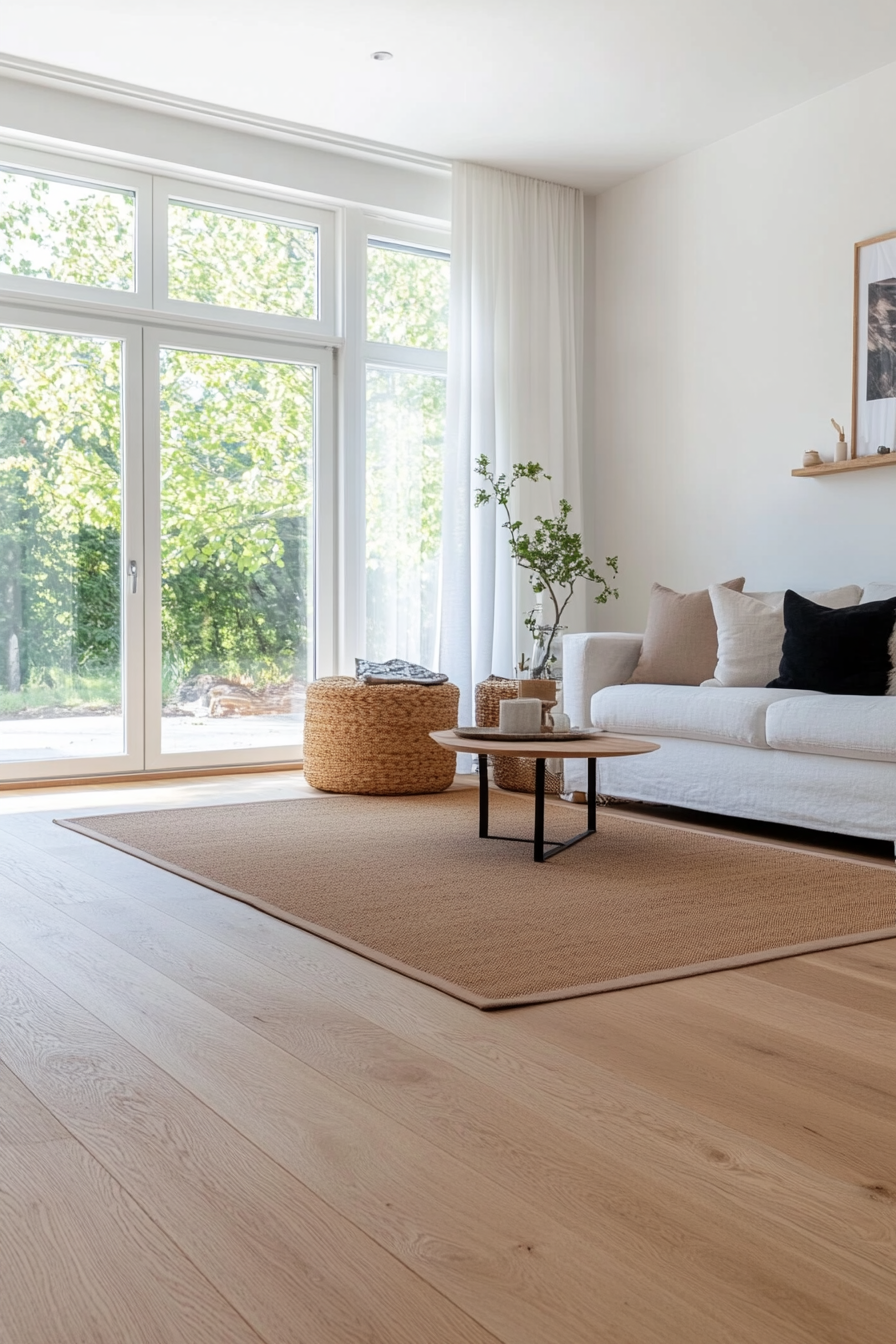
10. Vintage-inspired heritage designs
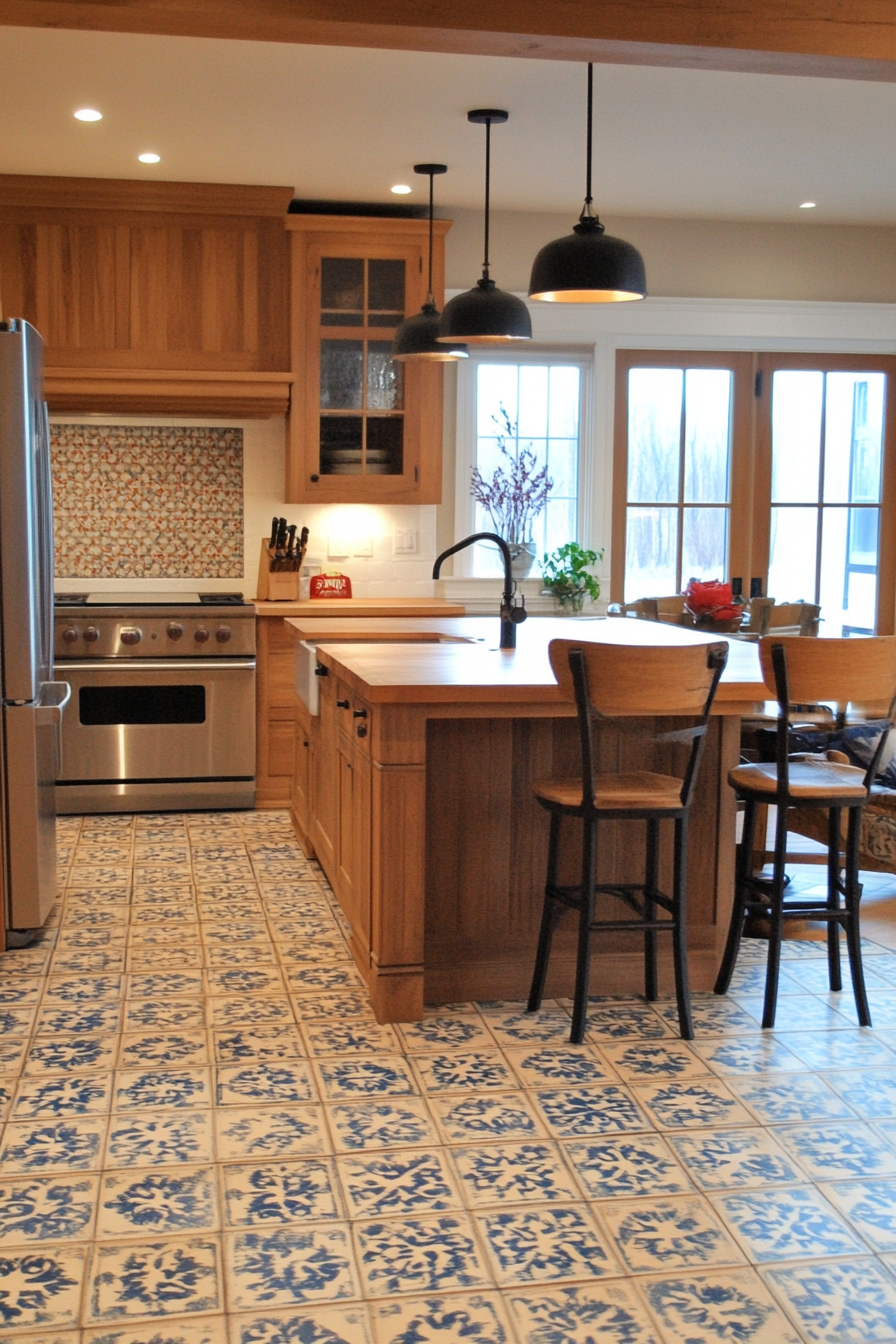
Vintage-inspired heritage designs bring a sense of history and charm to modern interiors. These floors often feature intricate motifs, distressed finishes, or encaustic tiles reminiscent of old-world elegance. Perfect for entryways, bathrooms, or kitchens, they create a focal point that’s rich in character and personality.
Quick tip: Balance vintage flooring with contemporary furniture for a unique fusion.
Heritage designs require attention to detail during installation, especially if you’re using intricate tiles. Maintenance is relatively simple with modern sealants that protect against wear and stains. Pair these floors with neutral walls to let the patterns shine.
Why you should try it: These designs offer a timeless appeal that tells a story and adds depth to any room.
Mix vintage flooring with modern elements, such as sleek light fixtures or minimalist furniture, for a balanced and eclectic style that feels both nostalgic and fresh.
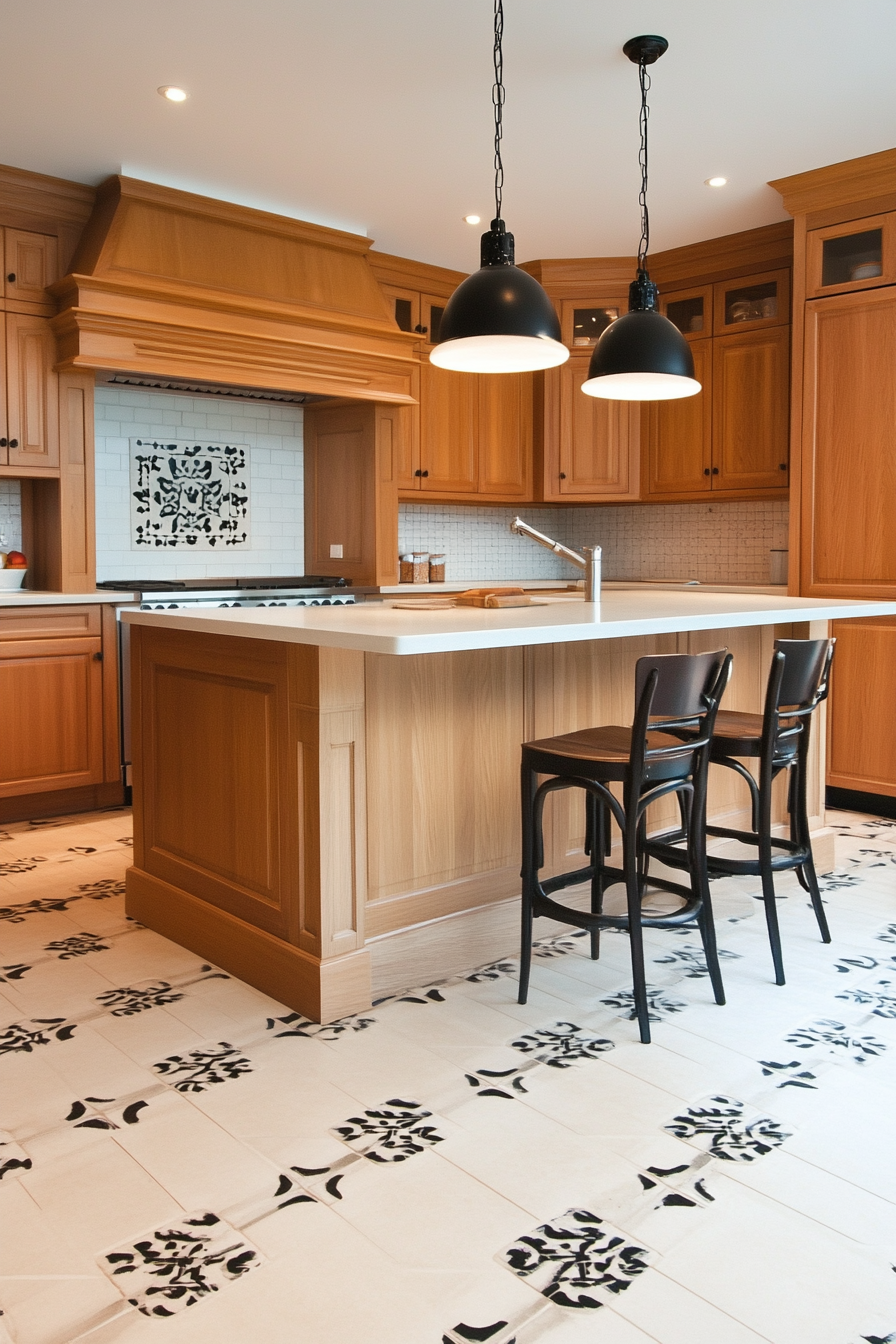
11. Eco-friendly and recycled materials

Eco-friendly flooring made from recycled or sustainable materials is a top trend for environmentally conscious homeowners. Options like bamboo, reclaimed wood, or recycled tiles are not only stylish but also help reduce your carbon footprint. These materials bring natural textures and a warm, organic feel to your home.
Quick tip: Look for products certified by sustainability organizations, like FSC or GreenGuard.
Recycled flooring materials are durable and often easier to maintain than traditional options. Bamboo is a great renewable resource, while reclaimed wood adds character with its unique imperfections. For tiles, recycled glass or ceramics offer vibrant, artistic options.
Why you should try it: Eco-friendly floors align with sustainable living goals without sacrificing style or quality.
To fully embrace the eco-friendly vibe, pair these floors with plants, natural fabrics, and energy-efficient lighting for a cohesive and conscious design.
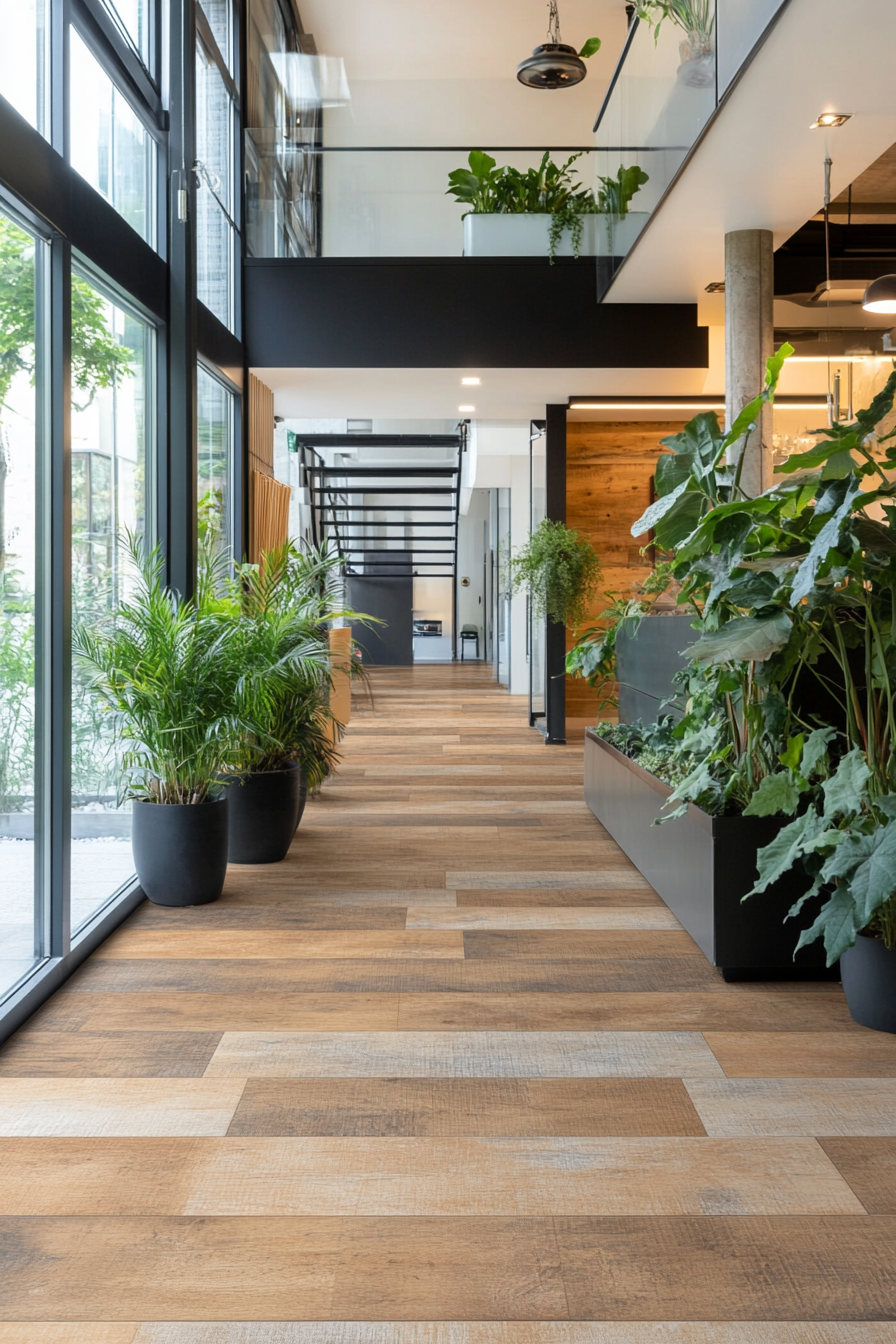
12. Wide plank vinyl flooring

Wide plank vinyl flooring is a practical and stylish choice for modern interiors. Offering the look of natural wood or stone, vinyl is durable, water-resistant, and easy to maintain. The wide planks create a clean, cohesive look, making it ideal for open floor plans, kitchens, or family rooms.
Quick tip: Opt for textured finishes to mimic the feel of natural materials.
Vinyl is an affordable option that doesn’t compromise on aesthetics. Many options include click-and-lock installation, making it a great DIY project. Regular sweeping and occasional mopping with a non-abrasive cleaner will keep it looking new for years.
Why you should try it: Wide plank vinyl combines practicality with a high-end look, perfect for busy households.
Use this flooring to anchor modern spaces with bold furniture, or complement it with neutral tones for a calm and cohesive environment.
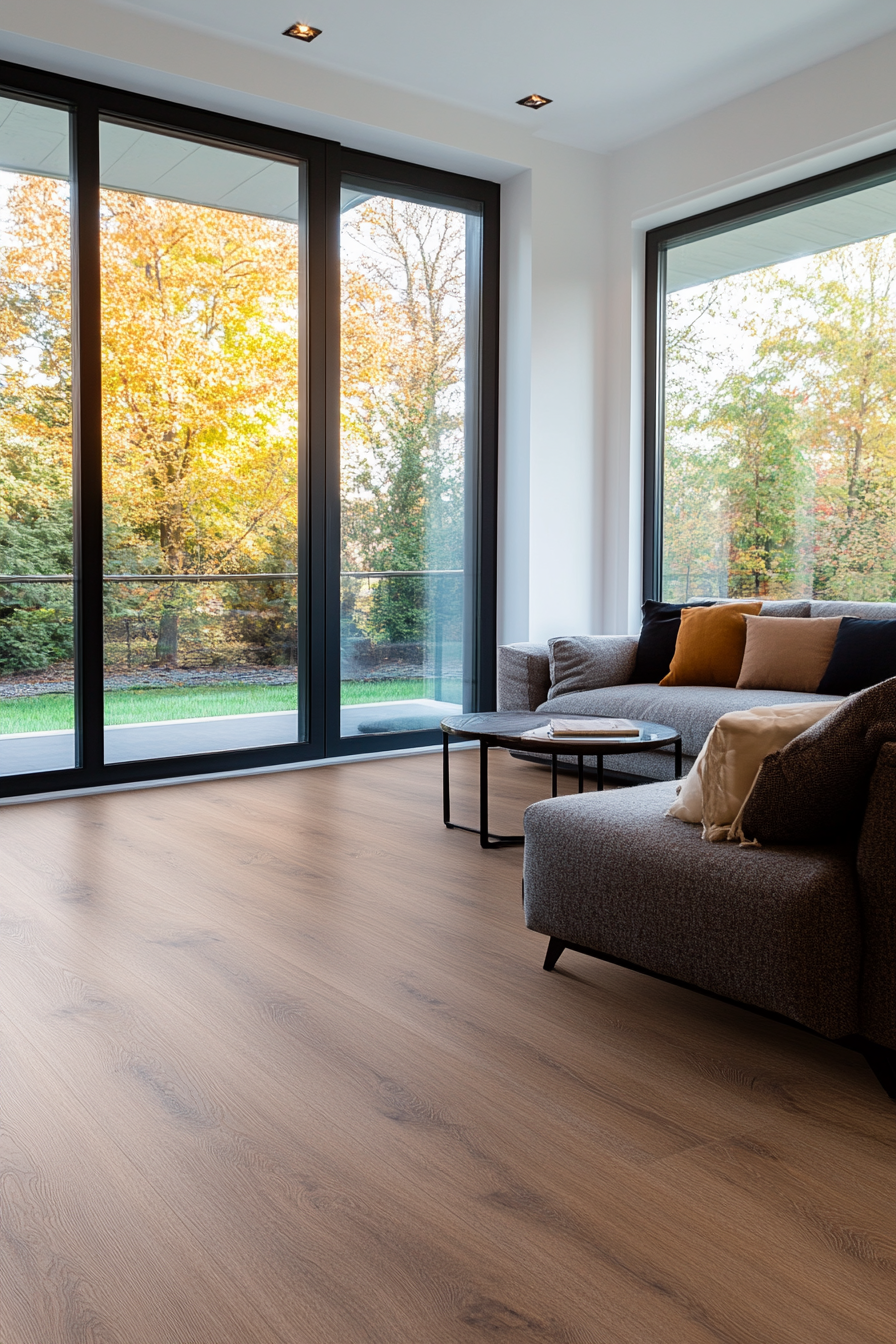
13. Stone and concrete-look vinyl

Stone and concrete-look vinyl flooring brings industrial chic vibes to residential spaces. This trend offers the raw, textured appearance of stone or polished concrete without the high cost or maintenance. It’s a great choice for kitchens, bathrooms, or loft-style living rooms looking for a modern edge.
Quick tip: Combine stone-look vinyl with warm wood accents to balance the industrial feel.
These vinyl floors are highly durable and often waterproof, making them suitable for high-moisture areas. They are easy to clean and maintain, requiring only regular sweeping and occasional mopping with mild detergent.
Why you should try it: This flooring delivers high-end, industrial aesthetics with low upkeep requirements.
Pair stone-look vinyl with metallic finishes and bold lighting fixtures to create a dramatic, contemporary design that feels luxurious yet functional.
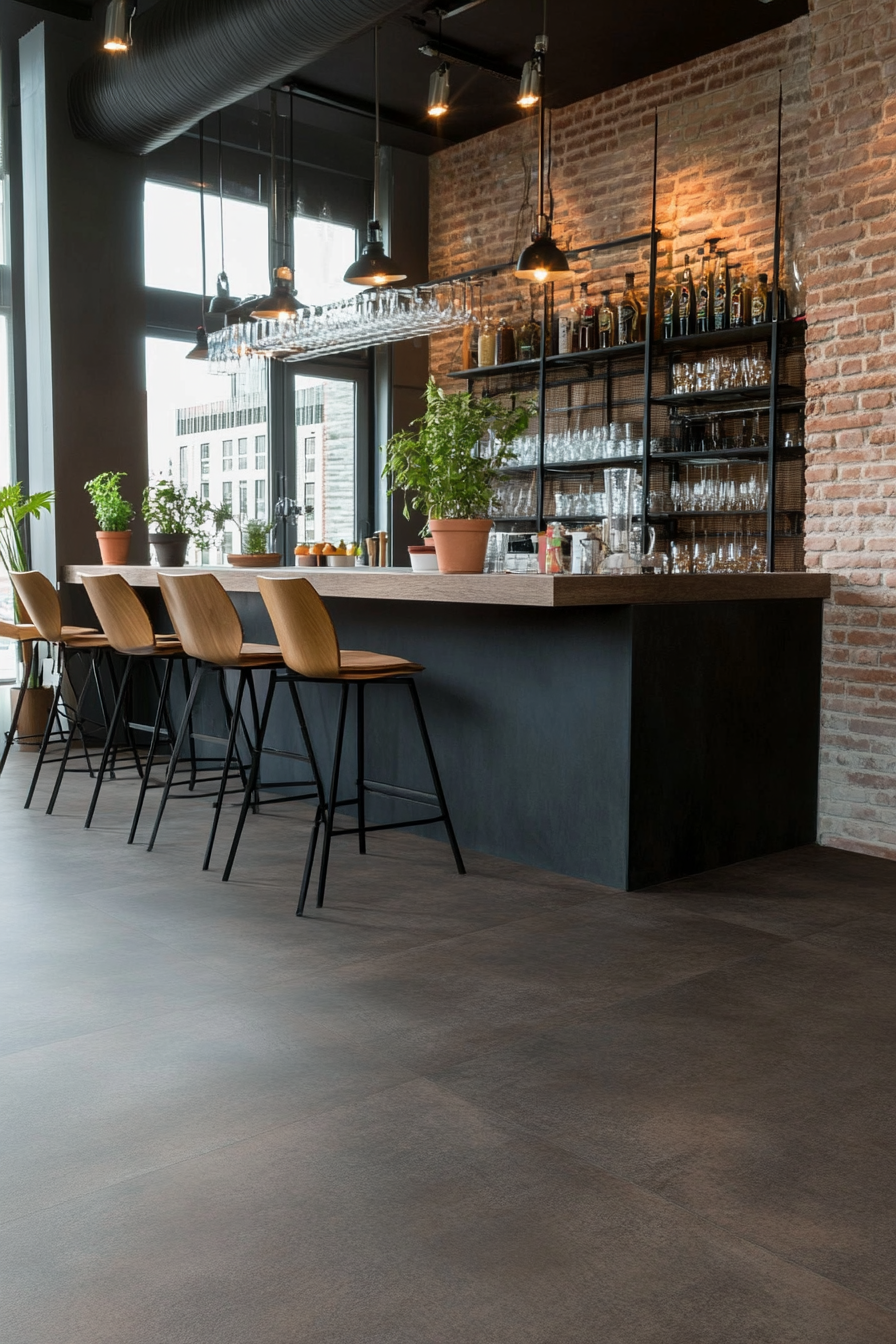
14. Matte finish flooring options
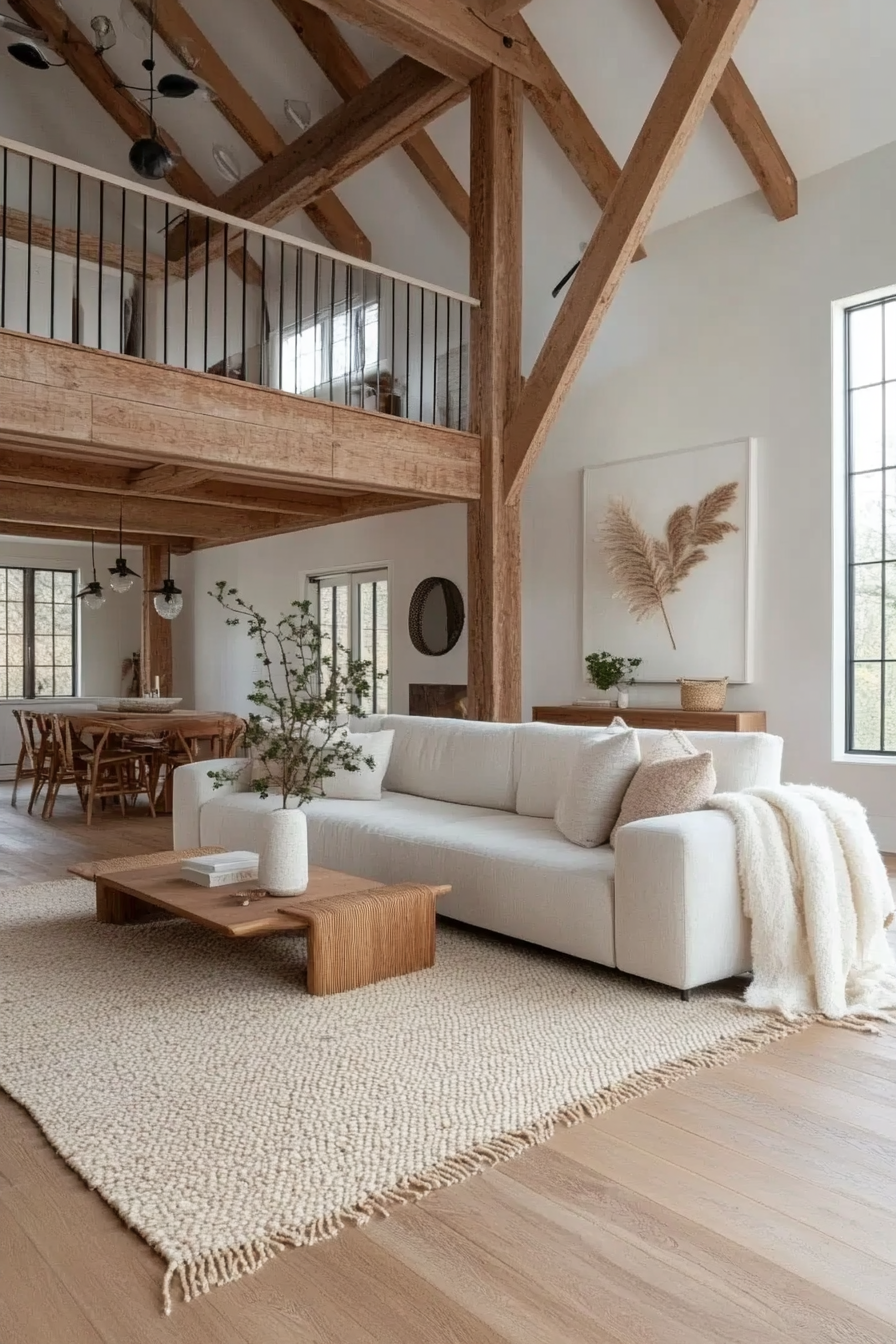
Matte finish flooring is a subtle yet impactful trend that offers a soft, understated look. Available in wood, laminate, or tile, matte finishes reduce glare and highlight the natural beauty of the material. This style works particularly well in minimalist or contemporary spaces, adding warmth and depth without overwhelming the room.
Quick tip: Use matte finishes in areas with abundant natural light to reduce reflection.
Matte flooring requires less frequent cleaning compared to high-gloss finishes, as it conceals dirt and smudges more effectively. To maintain its look, avoid waxy cleaners and opt for gentle, pH-balanced solutions.
Why you should try it: Matte flooring is versatile, timeless, and perfect for creating a cozy atmosphere.
Combine matte finish floors with soft textiles and warm lighting for a serene and inviting home that feels effortlessly modern.
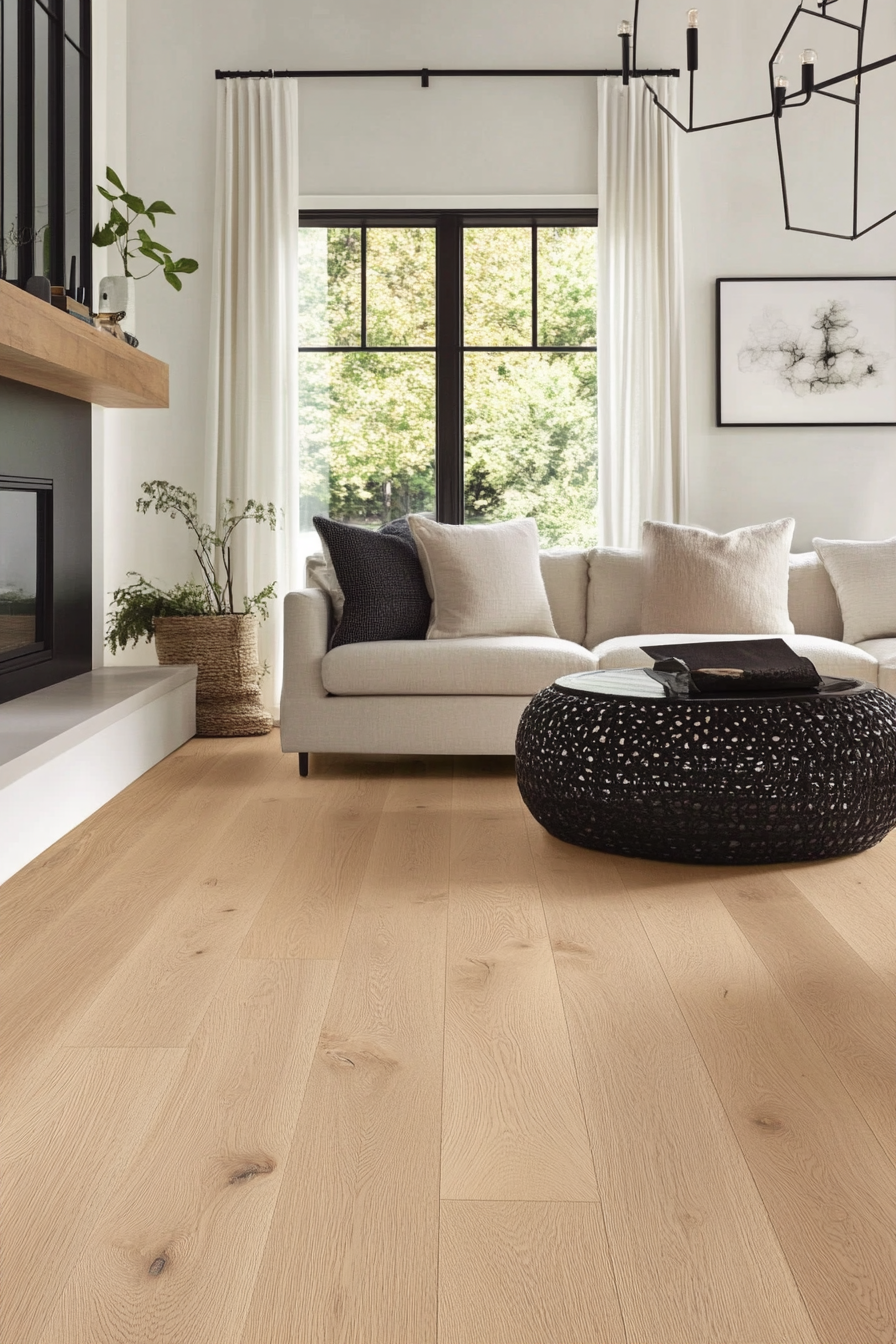
15. Bold zoning with contrasting materials
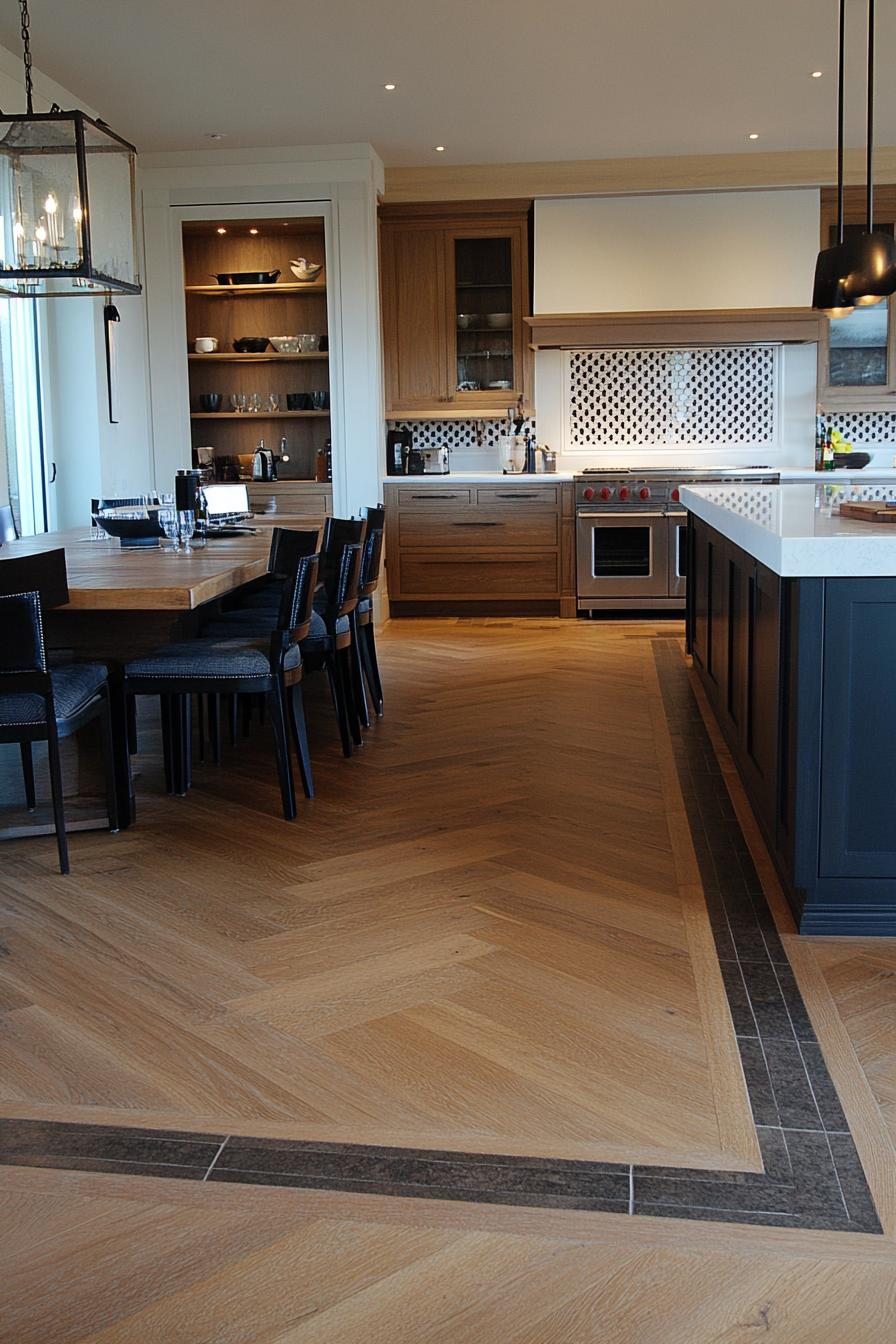
Bold zoning with contrasting materials is a striking trend for defining spaces within open-plan layouts. By mixing materials such as wood and tile or concrete and carpet, you can visually separate areas like dining, lounging, or kitchen spaces without using walls. It’s functional and adds a dramatic design element.
Quick tip: Keep the materials complementary to avoid visual clutter.
This technique requires careful planning to ensure seamless transitions. Use color-coordinated trims or borders to define zones while maintaining a cohesive look. This approach works especially well in large, multi-use spaces.
Why you should try it: It’s a creative way to maximize space while adding depth and personality to your design.
Experiment with bold zoning to highlight specific areas, such as a patterned tile under the dining table or textured wood for a cozy reading nook.
